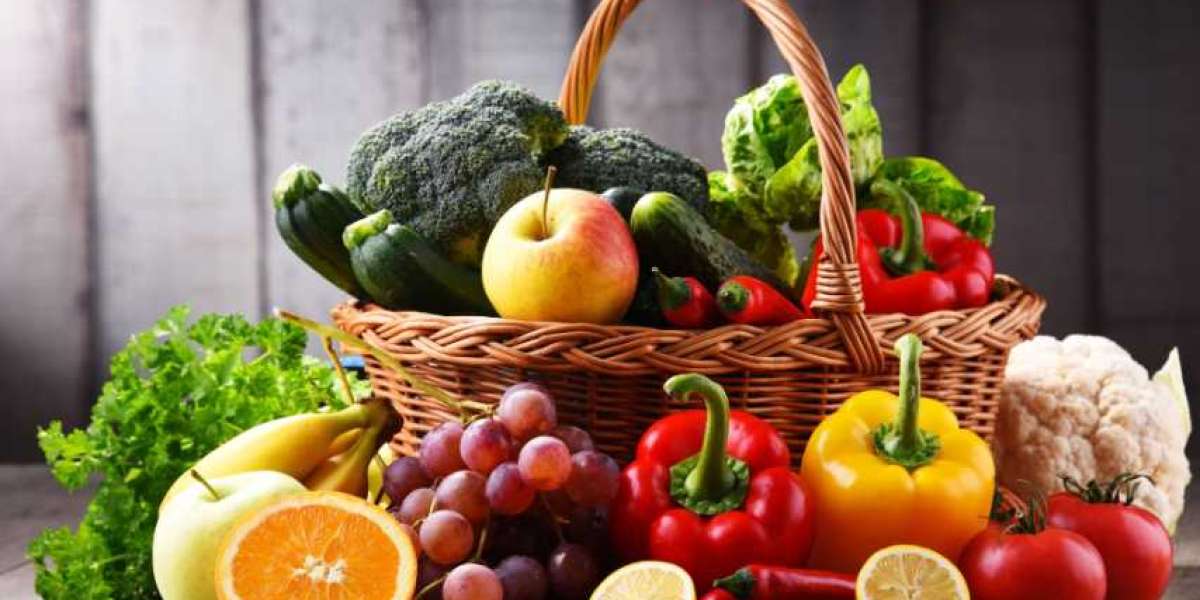Fruits and vegetables are the cornerstone of a healthy diet. They provide essential vitamins, minerals, fiber, and antioxidants that support overall health, boost immunity, and reduce the risk of chronic diseases. Selecting good quality produce is crucial to maximize these benefits. In this guide, we’ll explore what makes fruits and vegetables “good,” how to choose them, and the advantages they bring to your diet.
What Makes a Fruit or Vegetable "Good"?
A "good" fruit or vegetable has several key characteristics. It is:
Fresh: Freshness plays a big role in determining the nutrient content. The fresher the produce, the higher its vitamin and antioxidant levels. Fruits and vegetables that have been recently harvested retain more nutrients and taste better compared to those that have been stored for long periods.
Free from Blemishes: Good fruits and vegetables are usually free from blemishes, bruises, or mold. Blemishes can be a sign of spoilage or improper handling, which may lead to a loss of nutrients.
Rich in Color: Vibrant colors often indicate high levels of nutrients. For instance, deep green leafy vegetables are rich in iron and calcium, while bright orange and red produce like carrots and tomatoes are high in beta-carotene and lycopene.
Appropriate Ripeness: Choosing fruits and vegetables that are at the appropriate level of ripeness ensures the best flavor and nutrient content. An underripe fruit might be sour and hard, while an overripe one may lose its texture and nutritional value.
How to Select Good Fruits and Vegetables
Here are some practical tips for choosing the best fruits and vegetables:
Seasonality: Opt for seasonal produce. Fruits and vegetables in season are often fresher, tastier, and more affordable. They are also less likely to contain pesticides, as they can grow naturally without the need for extensive chemical support.
Weight and Firmness: Pick fruits and vegetables that feel heavy for their size, as this usually indicates juiciness. Firmness is also an important factor—soft spots can be a sign of overripeness or decay.
Aroma: A sweet, fragrant aroma is a sign of ripeness in many fruits like pineapples, peaches, and melons. Avoid produce with off or fermented smells, as this could indicate spoilage.
Leaf Quality: For leafy vegetables like spinach, kale, and lettuce, look for crisp, vibrant leaves. Wilted or yellowing leaves may indicate poor quality or age.
Health Benefits of Eating Good Fruits and Vegetables
Nutrient-Rich: Fruits and vegetables are loaded with vitamins such as Vitamin C, Vitamin A, and folate. These nutrients are essential for immune function, skin health, and energy production.
Rich in Antioxidants: Antioxidants, such as flavonoids and carotenoids, help neutralize free radicals in the body, reducing the risk of chronic diseases like cancer and heart disease. Berries, leafy greens, and cruciferous vegetables are particularly high in antioxidants.
High Fiber Content: The fiber in fruits and vegetables aids digestion, promotes gut health, and helps maintain steady blood sugar levels. Eating a diet rich in fiber can also aid in weight management by promoting a feeling of fullness.
Hydration: Many fruits and vegetables, such as cucumbers, watermelon, and oranges, have high water content, which helps keep the body hydrated and supports kidney function.
Examples of Good Fruits and Vegetables to Include in Your Diet
Berries (Blueberries, Strawberries, Raspberries): Rich in antioxidants, Vitamin C, and fiber, berries are excellent for boosting brain health and reducing inflammation.
Leafy Greens (Spinach, Kale, Swiss Chard): These greens are rich in iron, calcium, and folate, which are vital for bone health and energy.
Cruciferous Vegetables (Broccoli, Cauliflower, Brussels Sprouts): Known for their cancer-fighting properties, these vegetables are packed with glucosinolates, fiber, and Vitamin K.
Citrus Fruits (Oranges, Grapefruits, Lemons): Loaded with Vitamin C, these fruits support immune health and help improve iron absorption.
Root Vegetables (Carrots, Beets, Sweet Potatoes): Rich in beta-carotene, fiber, and potassium, root vegetables are great for maintaining good vision and supporting heart health.
Tomatoes: A great source of lycopene, a powerful antioxidant that may reduce the risk of certain cancers, particularly prostate cancer.
How to Store Fruits and Vegetables for Optimal Freshness
To keep fruits and vegetables fresh for longer, proper storage is essential:
Store Separately: Some fruits, like apples, bananas, and tomatoes, produce ethylene gas, which can speed up the ripening process of nearby produce. Store these items separately to prevent premature spoilage.
Use the Crisper Drawer: Utilize the crisper drawer in your refrigerator to maintain the right humidity level for vegetables like leafy greens, carrots, and bell peppers.
Avoid Washing Before Storing: Washing produce before storage can introduce excess moisture, leading to mold growth. Instead, wash fruits and vegetables right before consumption.
Conclusion
Good fruits and vegetables Bay Area are essential for a healthy lifestyle, offering a range of nutrients that benefit every part of the body. When selecting produce, focus on freshness, vibrant color, firmness, and appropriate ripeness. By choosing the best quality and storing them properly, you can enjoy the full spectrum of nutrients and flavors these foods have to offer. Embrace variety, include seasonal produce, and make fruits and vegetables a fundamental part of your daily diet to support your overall health and well-being.







